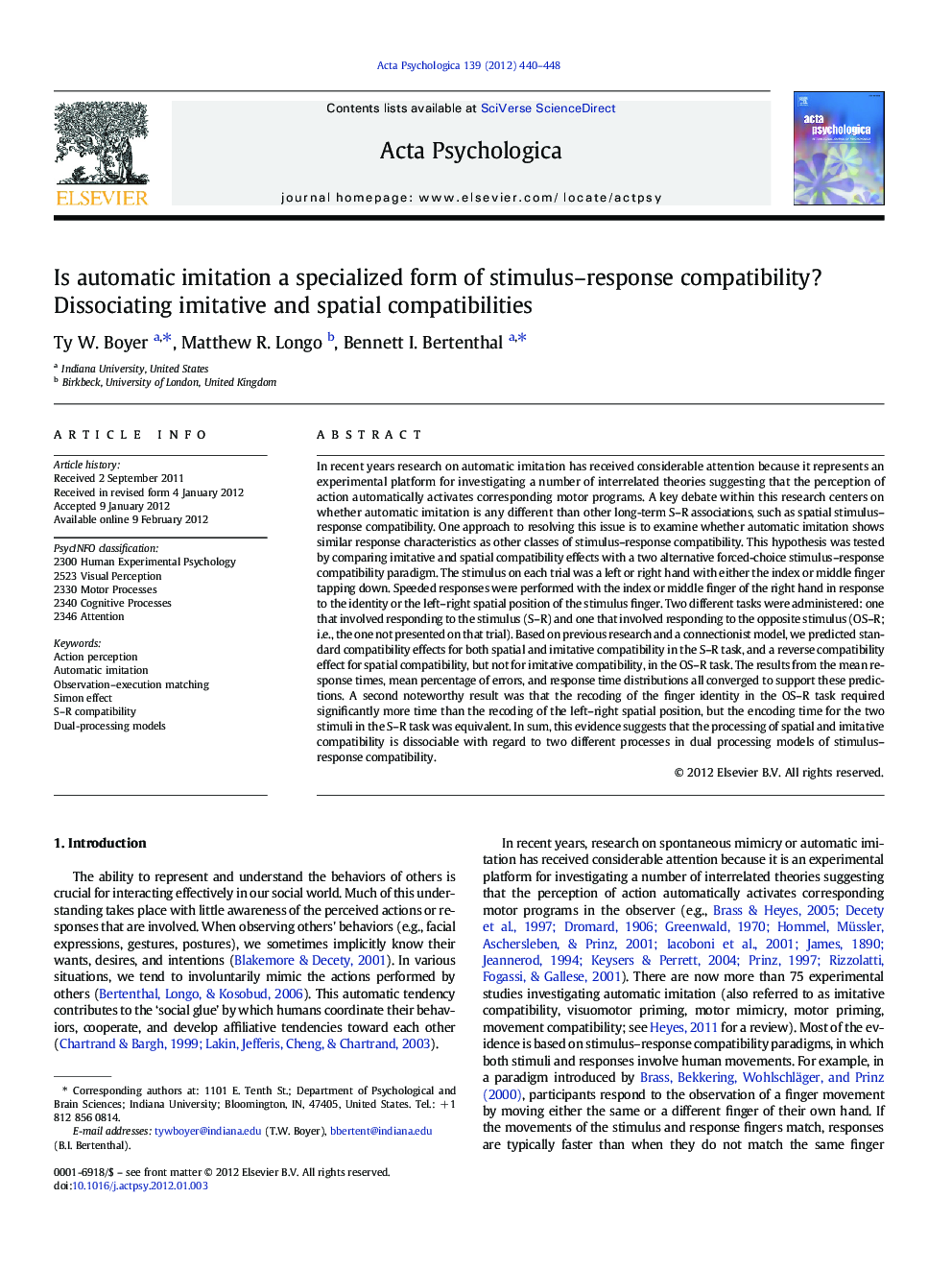| کد مقاله | کد نشریه | سال انتشار | مقاله انگلیسی | نسخه تمام متن |
|---|---|---|---|---|
| 920057 | 920262 | 2012 | 9 صفحه PDF | دانلود رایگان |

In recent years research on automatic imitation has received considerable attention because it represents an experimental platform for investigating a number of interrelated theories suggesting that the perception of action automatically activates corresponding motor programs. A key debate within this research centers on whether automatic imitation is any different than other long-term S–R associations, such as spatial stimulus–response compatibility. One approach to resolving this issue is to examine whether automatic imitation shows similar response characteristics as other classes of stimulus–response compatibility. This hypothesis was tested by comparing imitative and spatial compatibility effects with a two alternative forced-choice stimulus–response compatibility paradigm. The stimulus on each trial was a left or right hand with either the index or middle finger tapping down. Speeded responses were performed with the index or middle finger of the right hand in response to the identity or the left–right spatial position of the stimulus finger. Two different tasks were administered: one that involved responding to the stimulus (S–R) and one that involved responding to the opposite stimulus (OS–R; i.e., the one not presented on that trial). Based on previous research and a connectionist model, we predicted standard compatibility effects for both spatial and imitative compatibility in the S–R task, and a reverse compatibility effect for spatial compatibility, but not for imitative compatibility, in the OS–R task. The results from the mean response times, mean percentage of errors, and response time distributions all converged to support these predictions. A second noteworthy result was that the recoding of the finger identity in the OS–R task required significantly more time than the recoding of the left–right spatial position, but the encoding time for the two stimuli in the S–R task was equivalent. In sum, this evidence suggests that the processing of spatial and imitative compatibility is dissociable with regard to two different processes in dual processing models of stimulus–response compatibility.
► Automatic imitation allows testing theories of observation-execution matching.
► Is automatic imitation different than other long-term S-R associations?
► Response characteristics of imitative and spatial compatibility were compared.
► Results reveal reverse compatibility effect only for spatial compatibility.
► Automatic imitation and spatial compatibility are mediated by different processes.
Journal: Acta Psychologica - Volume 139, Issue 3, March 2012, Pages 440–448